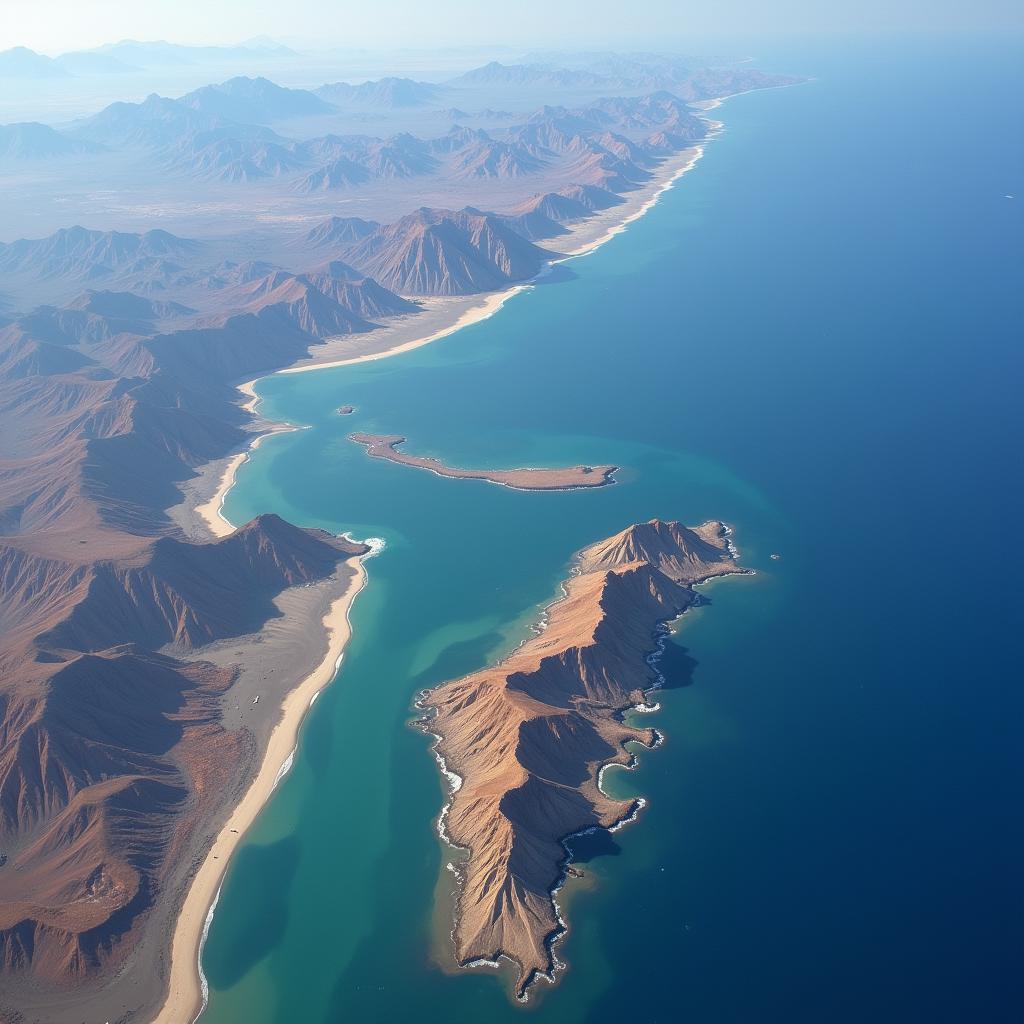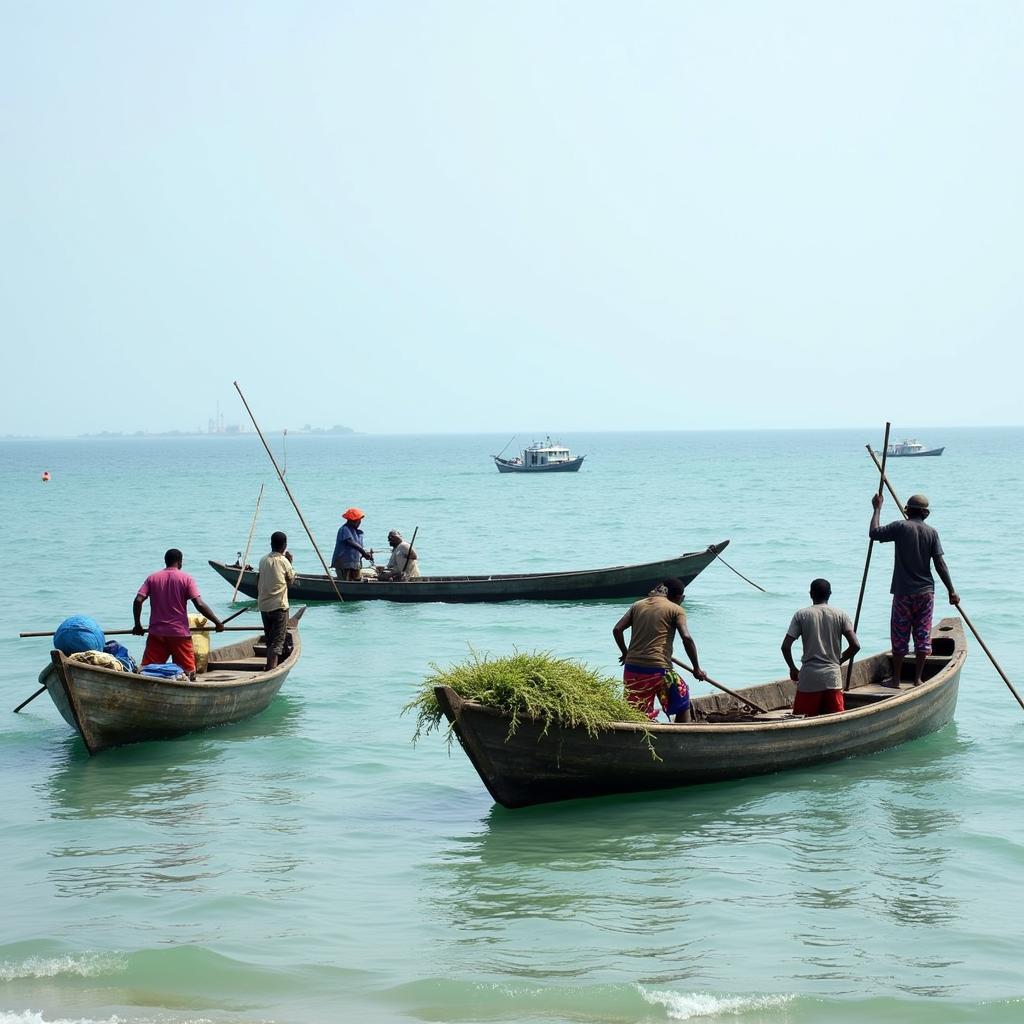African Country with Longest Coastline: Exploring Somalia’s Shores
Somalia, the African country with the longest coastline, boasts over 3,025 kilometers of pristine shores bordering the Indian Ocean and the Gulf of Aden. This extensive coastline has significantly shaped Somalia’s history, culture, and economy. From bustling port cities to quiet fishing villages, the coast offers a diverse tapestry of life, deeply intertwined with the sea.
Somalia’s coastal regions are home to various communities, each with unique traditions and livelihoods centered around the ocean. Fishing has always been a vital part of the Somali economy, providing sustenance and employment for generations. Besides its economic importance, the coastline plays a crucial role in the country’s biodiversity, hosting various marine species and ecosystems like coral reefs and mangroves. These coastal ecosystems are essential for the ecological balance of the region and support a rich array of marine life. The Somali coastline also holds significant historical importance, acting as a hub for trade and cultural exchange for centuries. Many ancient port cities along the coast have witnessed the ebb and flow of civilizations, leaving behind a rich legacy of architectural and cultural heritage. For instance, the historic port city of Zeila, situated on the northwestern coast, served as a crucial trading post connecting Africa with the Arabian Peninsula.
Somalia’s Coastal Geography: A Closer Look
Somalia’s extensive coastline isn’t just long; it’s also incredibly diverse. From sandy beaches to rocky cliffs and hidden coves, the landscape varies dramatically along its length. This geographical diversity is reflected in the rich biodiversity found along the coast, home to various species of fish, marine mammals, and seabirds. This ecological wealth has significant implications for Somalia’s economy and the livelihoods of its coastal communities.
Understanding the geographic characteristics of Somalia’s coastline is crucial to appreciating its importance. The northern coast, facing the Gulf of Aden, is characterized by arid landscapes and high cliffs, while the eastern coast, bordering the Indian Ocean, features sandy beaches and coral reefs. This variation in terrain impacts the types of marine ecosystems that thrive along different stretches of the coastline. For example, the coral reefs of the eastern coast provide habitats for numerous fish species, making them important fishing grounds. The northern coastline, with its strong currents and deeper waters, supports different marine life, including larger pelagic fish. This geographical diversity contributes to the overall richness of Somalia’s coastal biodiversity.
The country’s location on the Horn of Africa, projecting out into the Indian Ocean, also contributes to the strategic importance of its coastline. This strategic position has historically made Somalia a key player in maritime trade routes connecting Africa, Asia, and the Middle East. You might be surprised to learn about the size of other African nations compared to Somalia. Take a look at African countries by size for a broader perspective.
 Somalia coastline aerial view showcasing the diverse landscape and vast expanse
Somalia coastline aerial view showcasing the diverse landscape and vast expanse
Economic Significance of the Somali Coastline
The economic significance of Somalia’s coastline cannot be overstated. Fishing, port activities, and maritime trade have historically been vital pillars of the Somali economy. The abundant marine resources found along the coast provide livelihoods for numerous communities involved in fishing and related industries. Major ports like Mogadishu and Berbera serve as gateways for international trade, facilitating the import and export of goods and contributing significantly to the country’s economy.
“Somalia’s coastline is a lifeline for its people,” says Dr. Fatima Aden, a marine biologist based in Mogadishu. “The ocean provides not only food and income but also connects Somalia to the world through trade and cultural exchange.”
Coastal tourism, while still developing, holds immense potential. The pristine beaches and diverse marine life attract visitors from around the globe. Developing sustainable tourism practices can further contribute to the economic growth of coastal regions and create new employment opportunities. Are you curious about which African countries share a border with the Indian Ocean? Find out more.
 Somali fishermen using traditional boats showcasing the importance of fishing to the local economy.
Somali fishermen using traditional boats showcasing the importance of fishing to the local economy.
Challenges and Conservation Efforts
Despite its importance, Somalia’s coastline faces several challenges, including overfishing, pollution, and the impacts of climate change. These challenges threaten the health of the marine ecosystems and the livelihoods of coastal communities. However, various initiatives are underway to address these issues and promote sustainable management of coastal resources. Local communities, government agencies, and international organizations are working together to implement conservation programs, promote sustainable fishing practices, and raise awareness about the importance of protecting the coastline.
Protecting Somalia’s marine biodiversity is essential for the long-term sustainability of the coastal ecosystems and the well-being of its people. Implementing effective conservation measures and promoting responsible use of marine resources are crucial steps in ensuring the health and prosperity of Somalia’s coastal regions for generations to come. If you’re interested in the geographical layout of the African continent, you might find this resource helpful: African countries north to south.
Conclusion
Somalia, the African country with the longest coastline, possesses a rich and diverse coastal environment that holds immense ecological, economic, and cultural significance. Understanding the importance of protecting this valuable resource is crucial for the sustainable development of the country. While challenges remain, ongoing conservation efforts and the commitment of local communities offer hope for the future of Somalia’s stunning shores. From the bustling ports to the quiet fishing villages, Somalia’s coastline offers a unique window into the heart of Africa.
FAQ
- What is the length of Somalia’s coastline? (Somalia’s coastline is over 3,025 kilometers long.)
- What are the main economic activities along the Somali coast? (Fishing, port activities, and maritime trade are the main economic activities.)
- What are some of the challenges facing Somalia’s coastline? (Overfishing, pollution, and climate change pose significant challenges.)
- What conservation efforts are being undertaken to protect Somalia’s coastline? (Various initiatives are underway, including community-based conservation programs and sustainable fishing practices.)
- Why is Somalia’s coastline important? (It is vital for the country’s economy, biodiversity, and cultural heritage.)
- What bodies of water does Somalia’s coastline border? (The Indian Ocean and the Gulf of Aden.)
- What is the significance of Somalia’s location on the Horn of Africa? (It gives Somalia a strategic position in maritime trade routes.)
For further exploration, consider the following related topics: African countries bordering the mediterranean sea. You may also find it interesting to learn about African countries south to north.
Kêu gọi hành động: Khi cần hỗ trợ hãy liên hệ Số Điện Thoại: +255768904061, Email: [email protected] Hoặc đến địa chỉ: Mbarali DC Mawindi, Kangaga, Tanzania. Chúng tôi có đội ngũ chăm sóc khách hàng 24/7.


